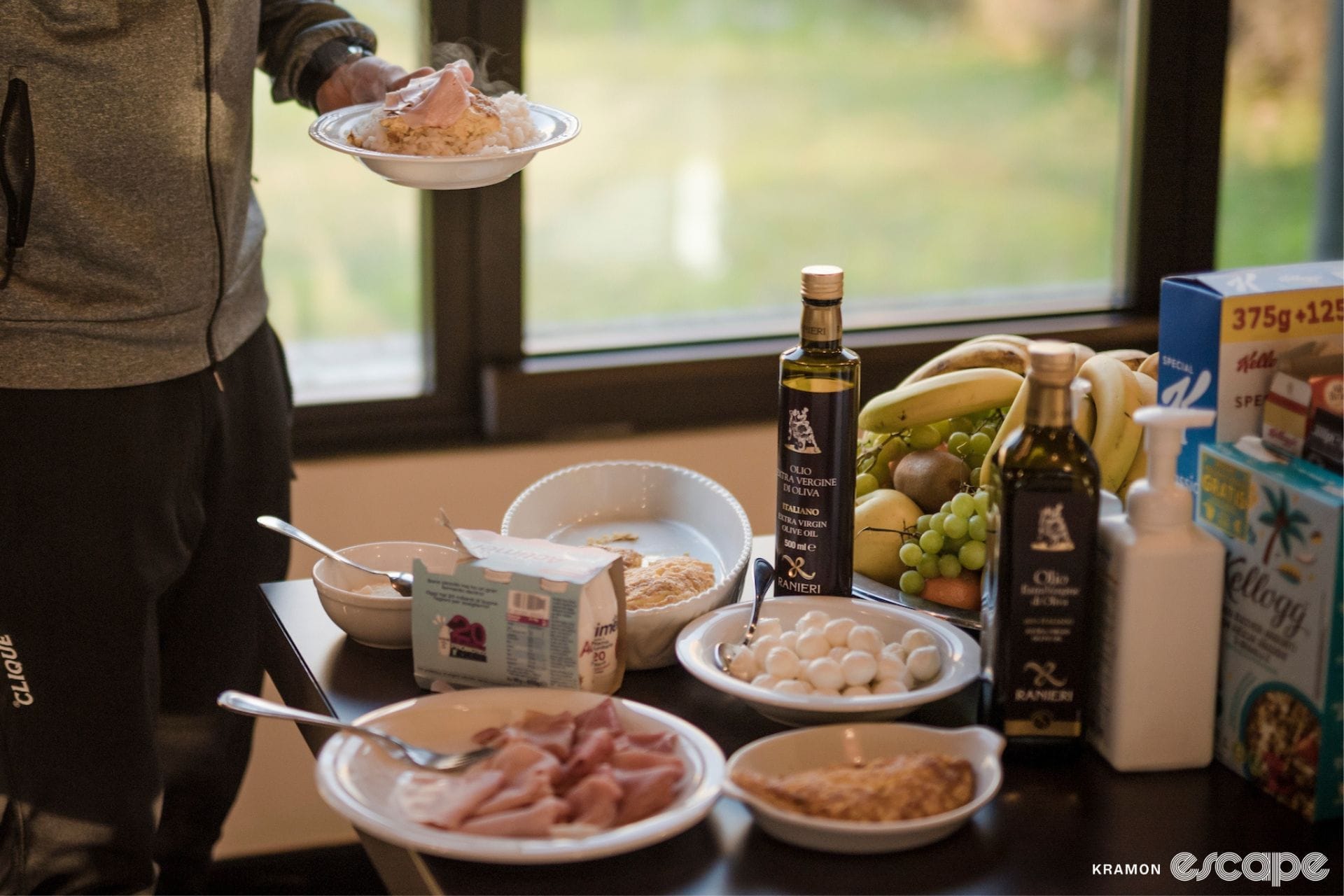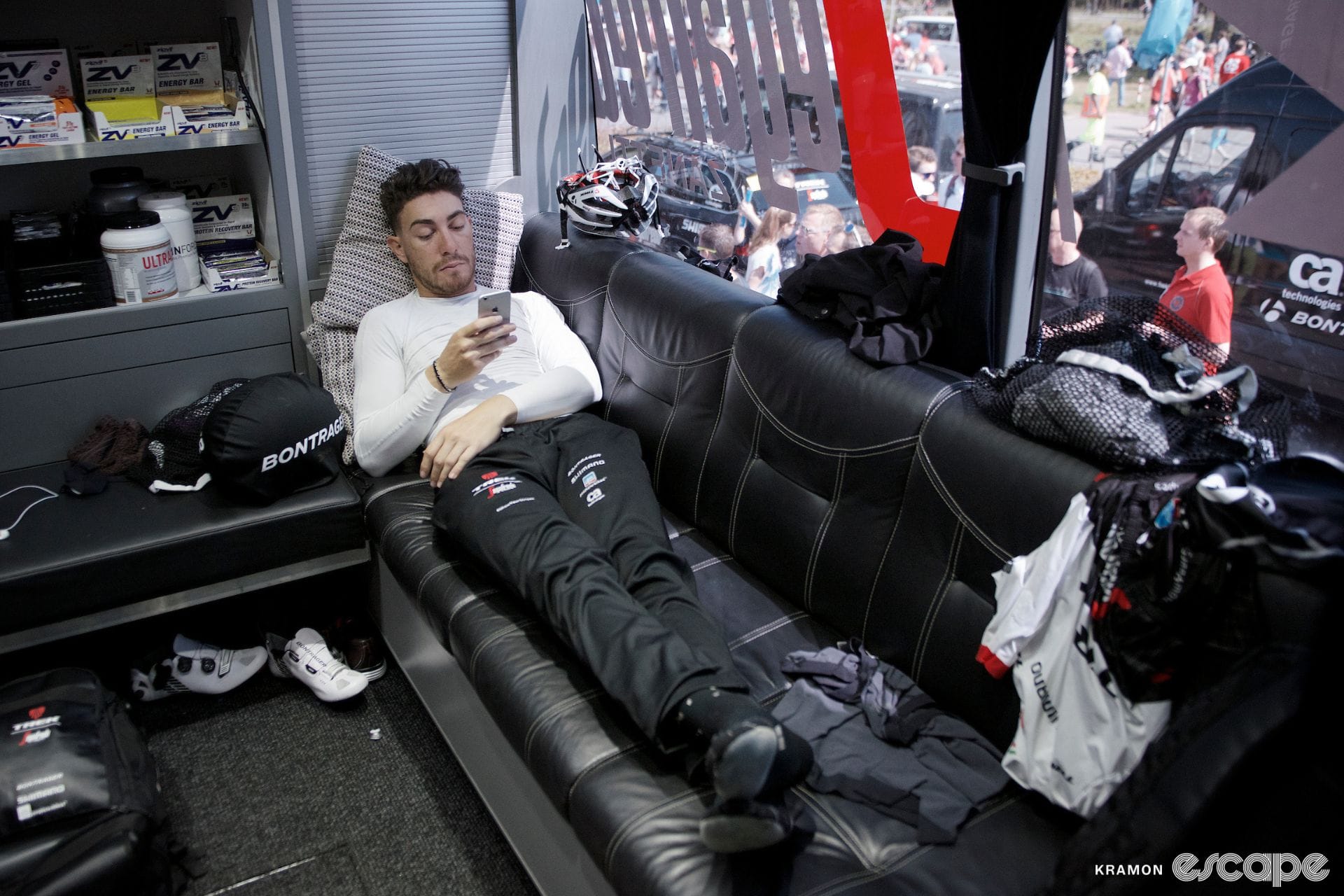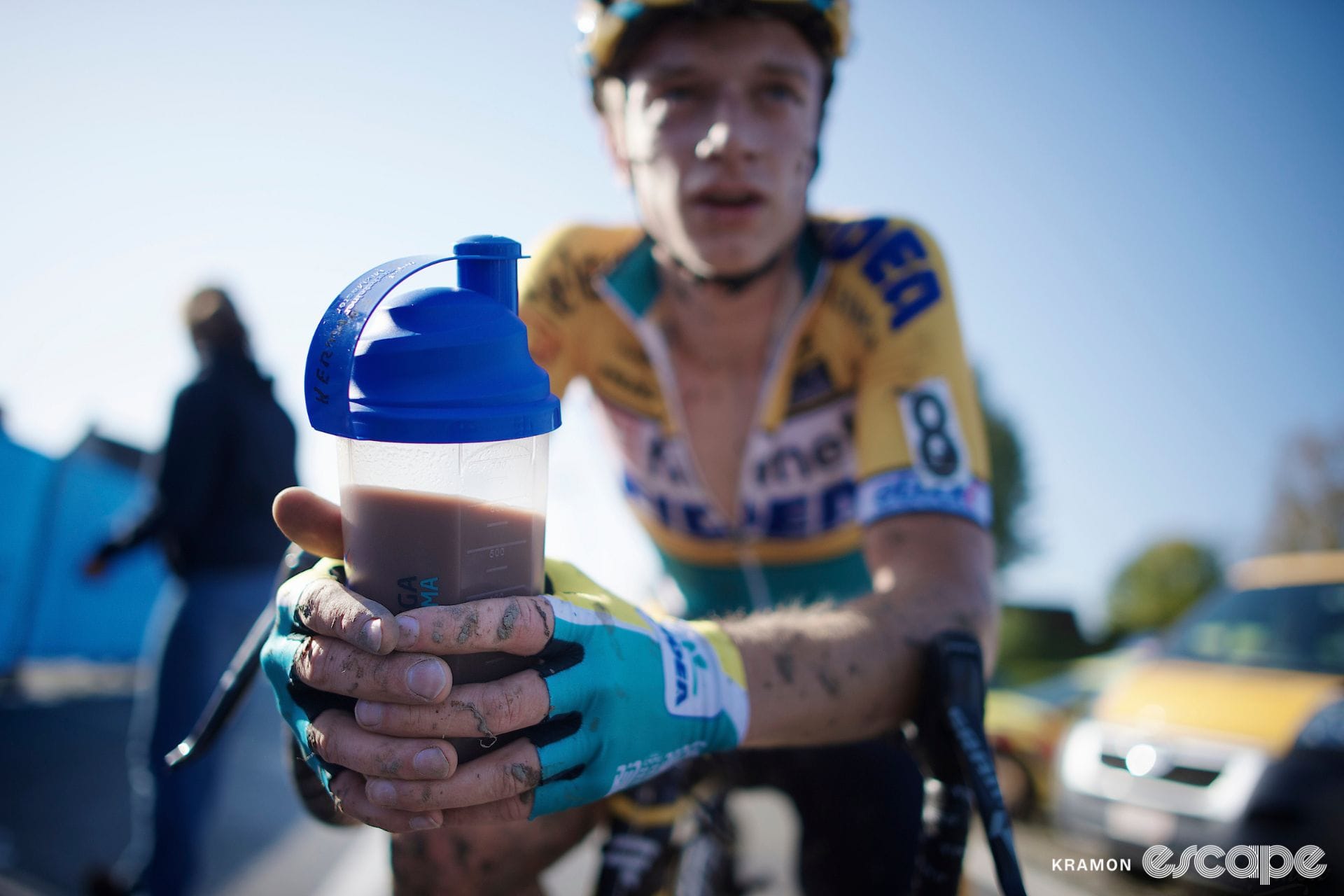The post-ride fueling window isn’t as important as many think, but when and what you eat matters a lot.
Kristof Ramon, Cor Vos, Duhaime, Unsplash
For years, the post-ride protein shake has been the ritual of choice for cyclists chasing recovery. But according to PhD nutritionist and WorldTour consultant Sam Impey, if you’re reaching for the shake before you’ve topped up your carbs, you won’t be getting the benefits you’re hoping for.
In endurance sport, few topics have been as widely accepted but equally misunderstood as protein. For many cyclists, a post-ride shake has become an almost non-negotiable part of recovery, often seen as essential as the ride itself. But what if that scoop of powder isn’t doing quite what you think it is?
Despite its reputation, protein isn’t a magic bullet for recovery, and using it incorrectly could mean missed opportunities to refuel effectively, adapt better, and support long-term performance improvement. In fact, for most recreational road cyclists, supplementing protein may be unnecessary altogether.
So who needs supplemental protein, who doesn’t, and how do you get it in a way that delivers on the performance promise? We spoke with Impey, chief scientific officer at sports nutrition app Hexis, which works with amateur athletes and WorldTour teams Lidl-Trek and EF Education-EasyPost, and Tim Podlogar, nutrition consultant to Tudor Pro Cycling, to dig into the real role of protein in a cyclist’s diet. (Impey is also behind nutrition analysis platform ExoAnalytics, which we wrote about recently.) From the misplaced obsession with the “recovery window” to the overlooked importance of total energy balance, what emerged was clear: if you’re adding protein supplements to your routine without thinking about timing, context, or your actual needs, you’re probably doing it wrong.
Why protein matters for cyclists
Protein might not seem as relevant to endurance athletes as it is to gym-goers chasing bigger biceps, but it plays a vital role in supporting the adaptations cyclists rely on to improve fitness and recover from training. Even during steady, low-intensity riding, your muscles are busy adapting beneath the surface: building mitochondria, laying down fresh capillaries, and refining their internal structures. All of these processes require protein.
Impey explains that cyclists often overlook how broad the body’s demand for protein really is. “About 60% of the protein you eat isn’t going to your muscles,” he said. “It’s being used to maintain other essential systems like the turnover of your gut lining.”

For most riders who are eating a balanced diet and enough calories, hitting protein intake happens almost automatically. However, convenience is often the stumbling block. “Protein shakes aren’t essential, but they’re useful,” Impey said. “If they make it easier to consistently hit your targets, there’s no harm in using them.”
More on this in a moment, but the sweet spot for endurance athletes typically falls between 1.6 to 2.0 grams of protein per kilogram of body weight per day. Those figures don’t change dramatically with age or training intensity, though heavier training blocks or recovery from illness might justify the higher end. For older athletes, maintaining adequate daily protein even as overall calorie intake declines becomes even more important to protect muscle health.
Especially heavy training blocks aside, Podlogar noted that protein requirements are fairly consistent even as training changes and evolves. “I recommend athletes aim for similar amounts of high-quality protein year-round, around 20–30 g of high-quality protein (e.g., fish, poultry, meat, milk protein, eggs) at each meal, three to four times per day. What changes is the overall proportion of protein in the diet,” he said. “In high-volume weeks, carbohydrate intake increases, so protein makes up a smaller percentage of the diet. In lower-volume weeks, protein ends up being a higher percentage, even if the absolute amount stays the same.
“Protein intake should stay relatively stable. During calorie restriction, you don’t want to push protein too high, or you will have to have less carbohydrates, and that would hurt training quality. I’d keep it similar to when in energy balance. The real changes come from manipulating carbohydrate and fat intake around training demands. Fat intake is probably the macronutrient that can be reduced the most.”

This is also the same on rest days, Podlogar said. “In principle, the amount of high-quality protein per meal should stay consistent. Because total food intake is usually lower on rest days, the absolute protein amount may drop slightly, but each meal should still include 20–30 g of quality protein.”
Myth: Recovery starts with protein, right?
In cycling circles, the post-ride protein shake has long been a near-religious ritual for riders. Helmet off, shake in hand. But according to both Impey and Podlogar, that sequence might be due for a rethink.
Did we do a good job with this story?

